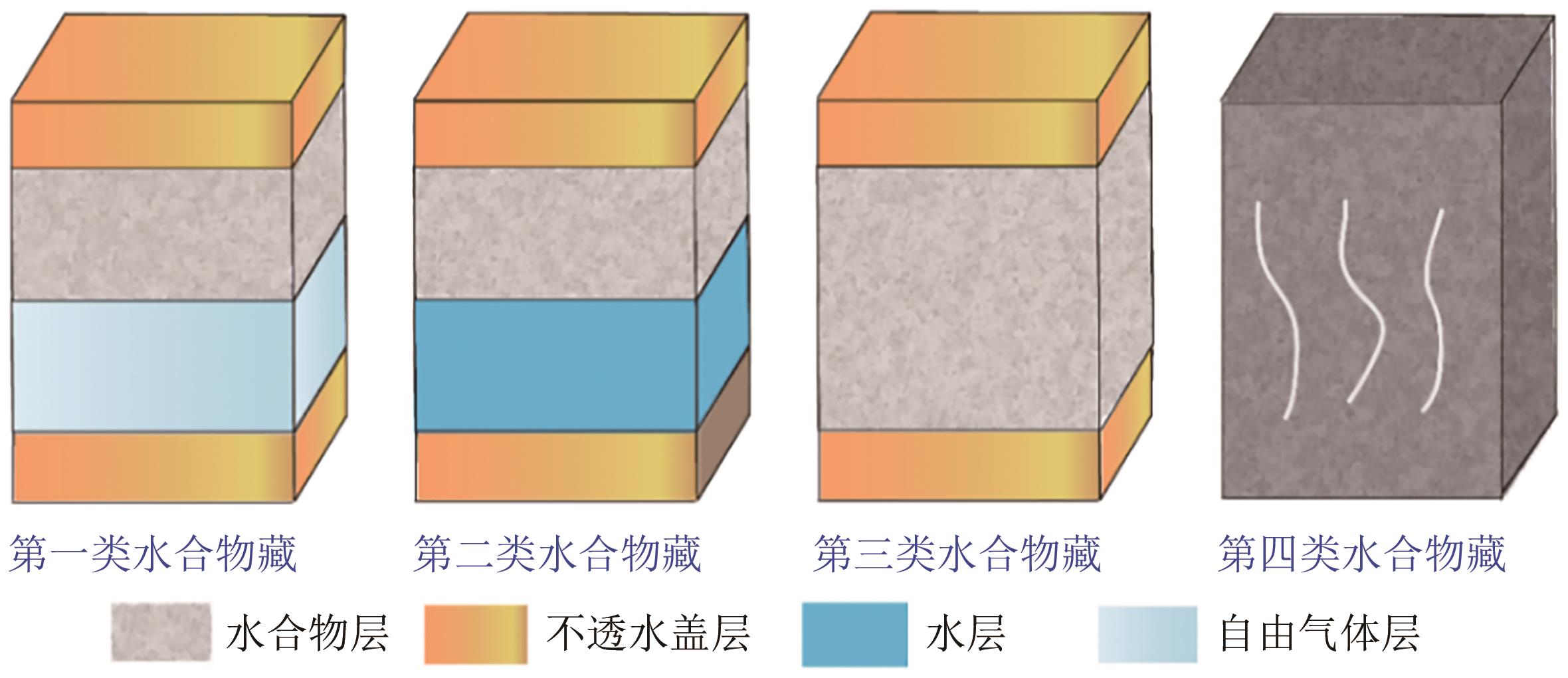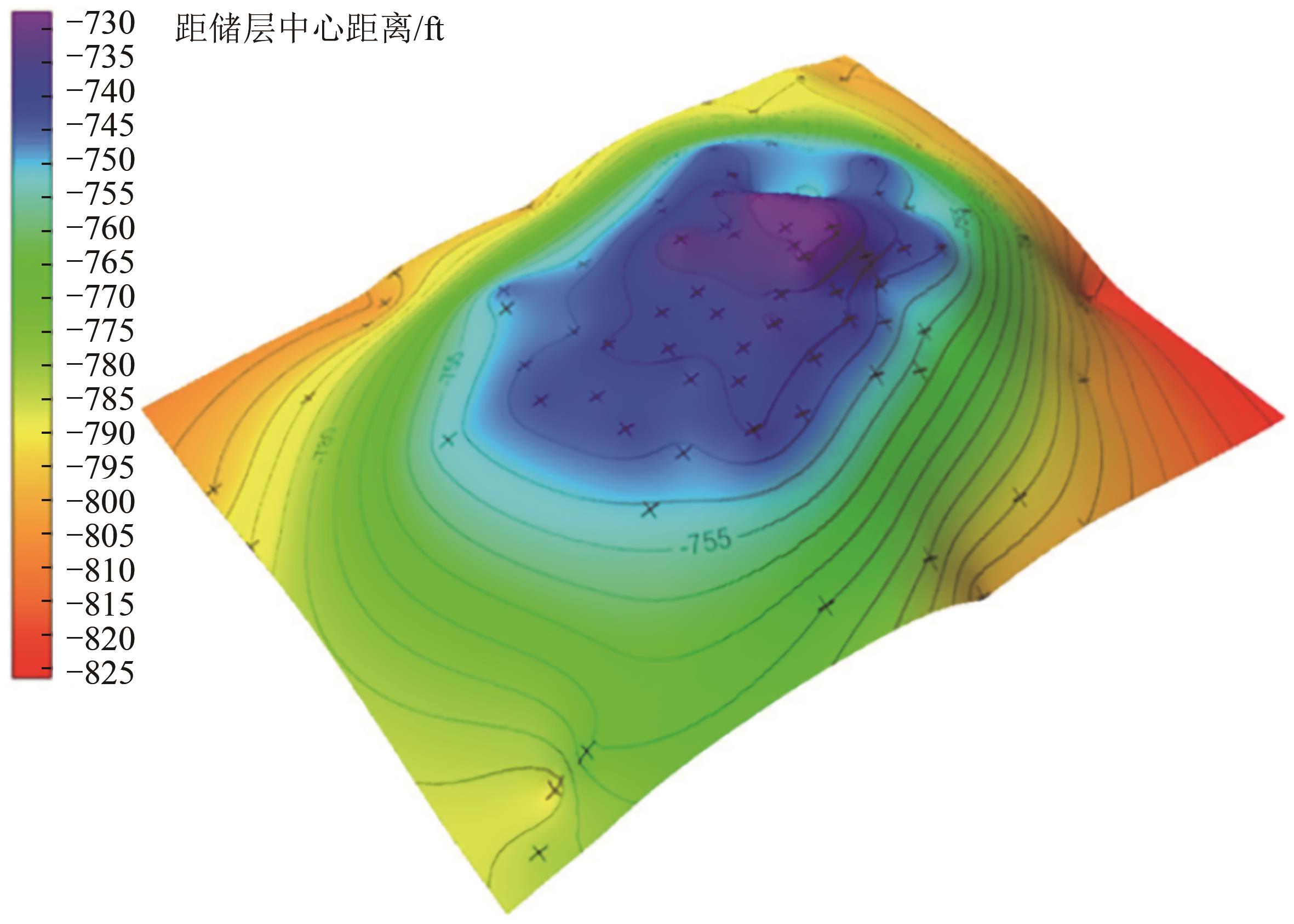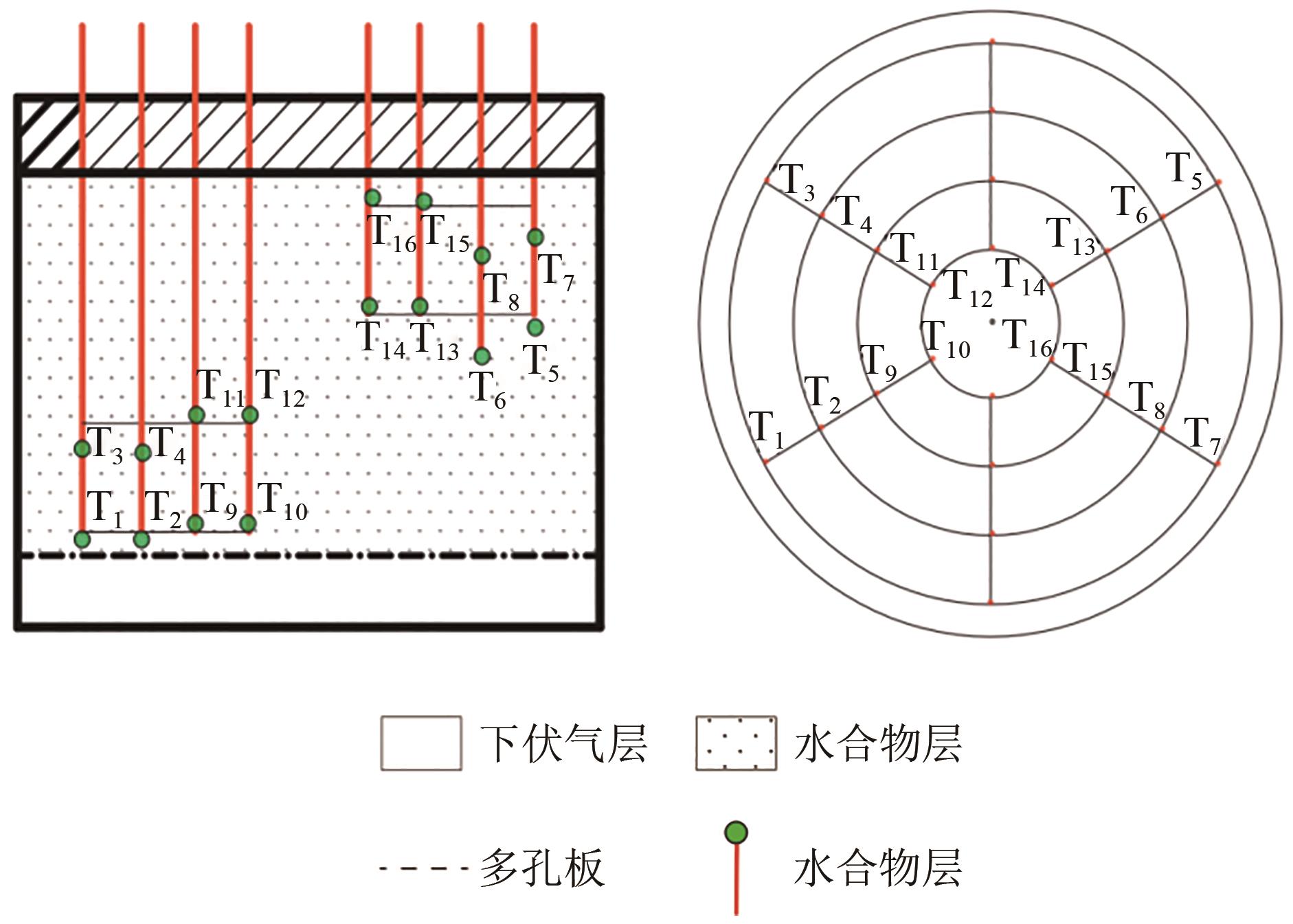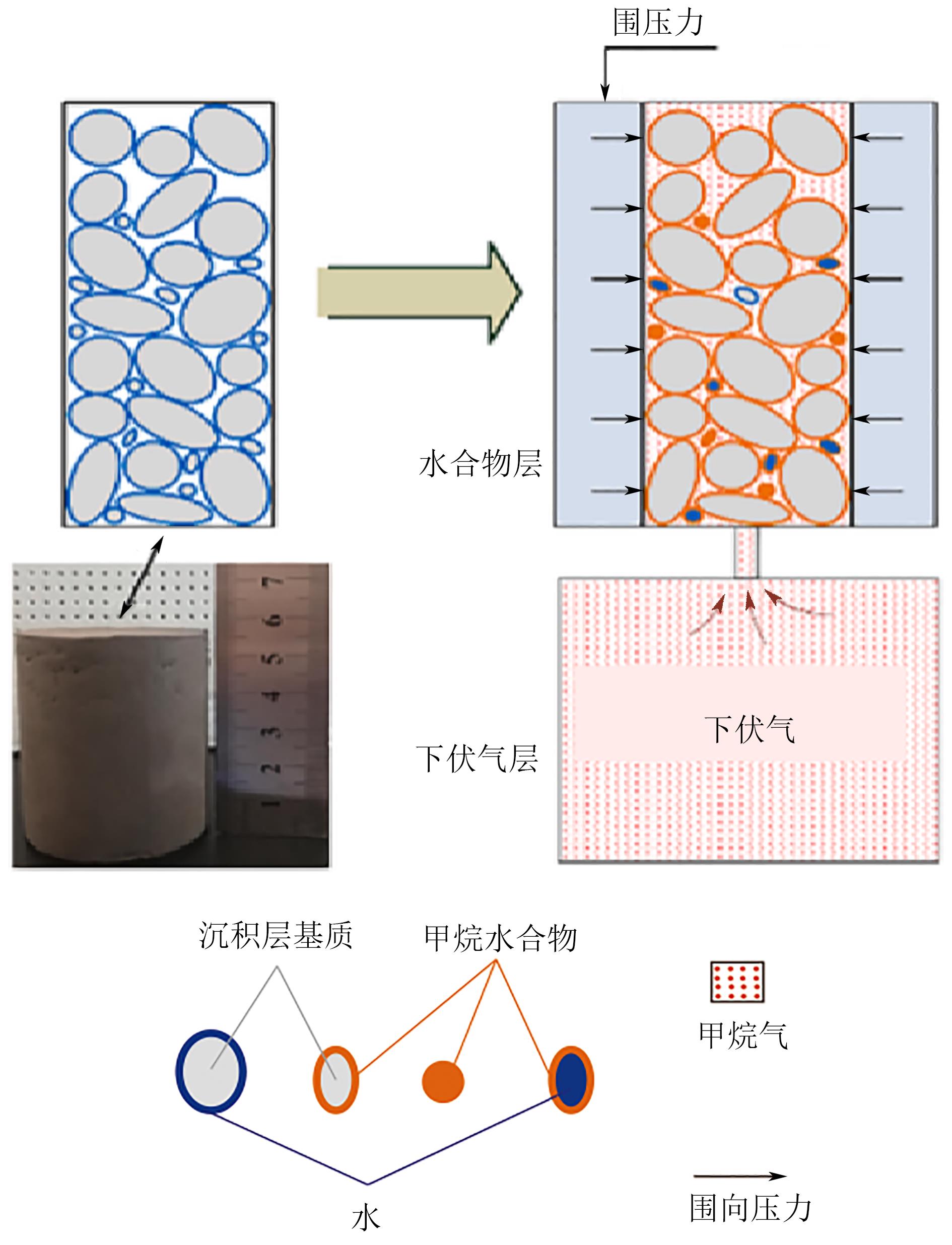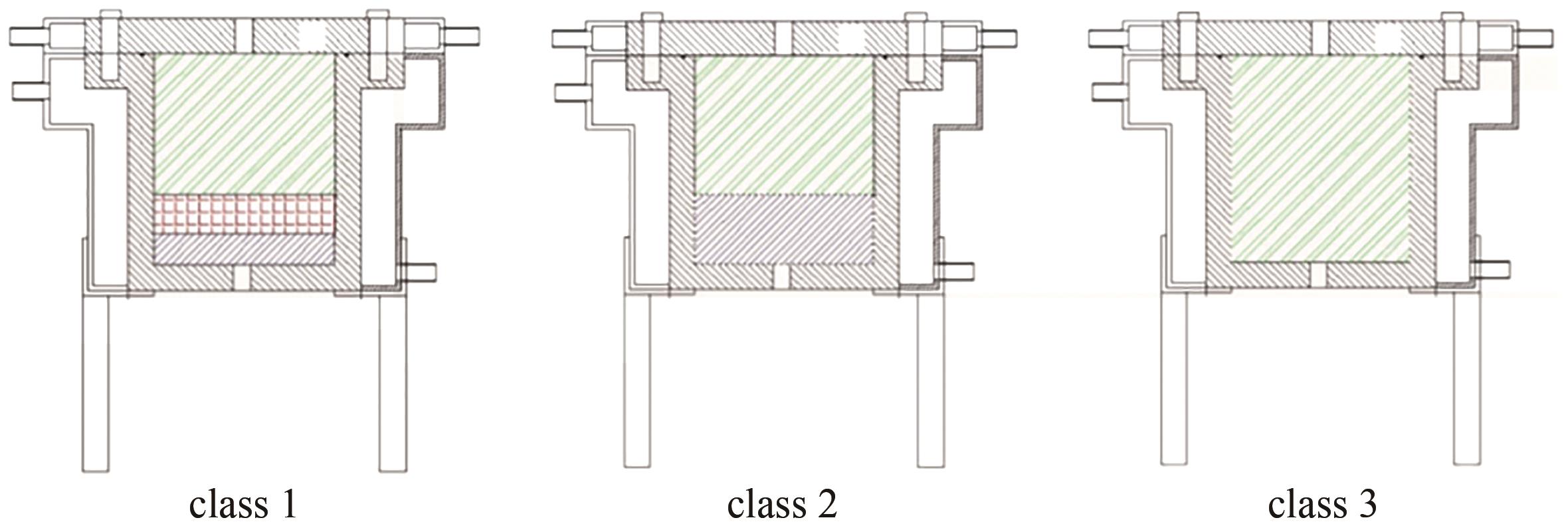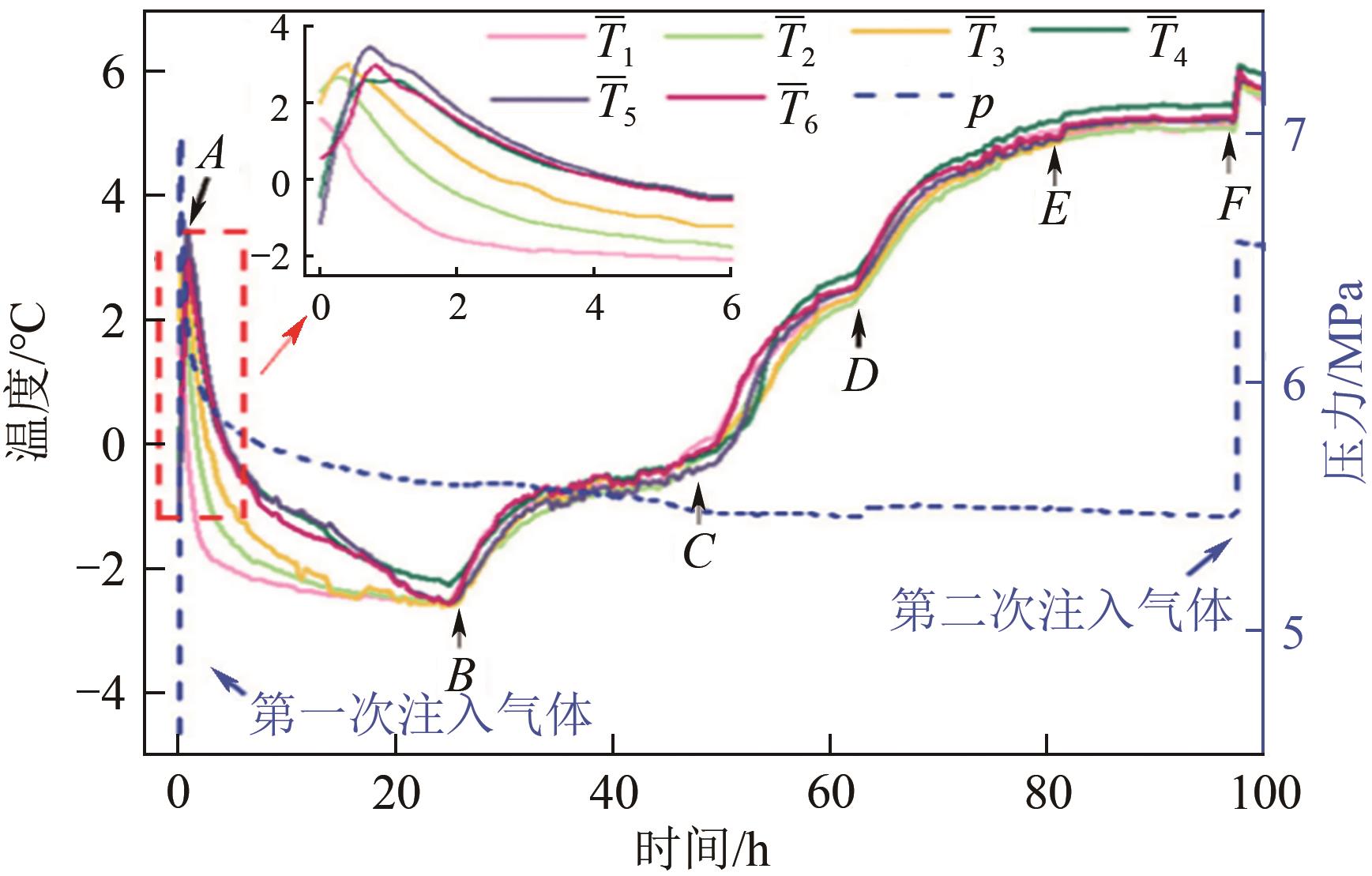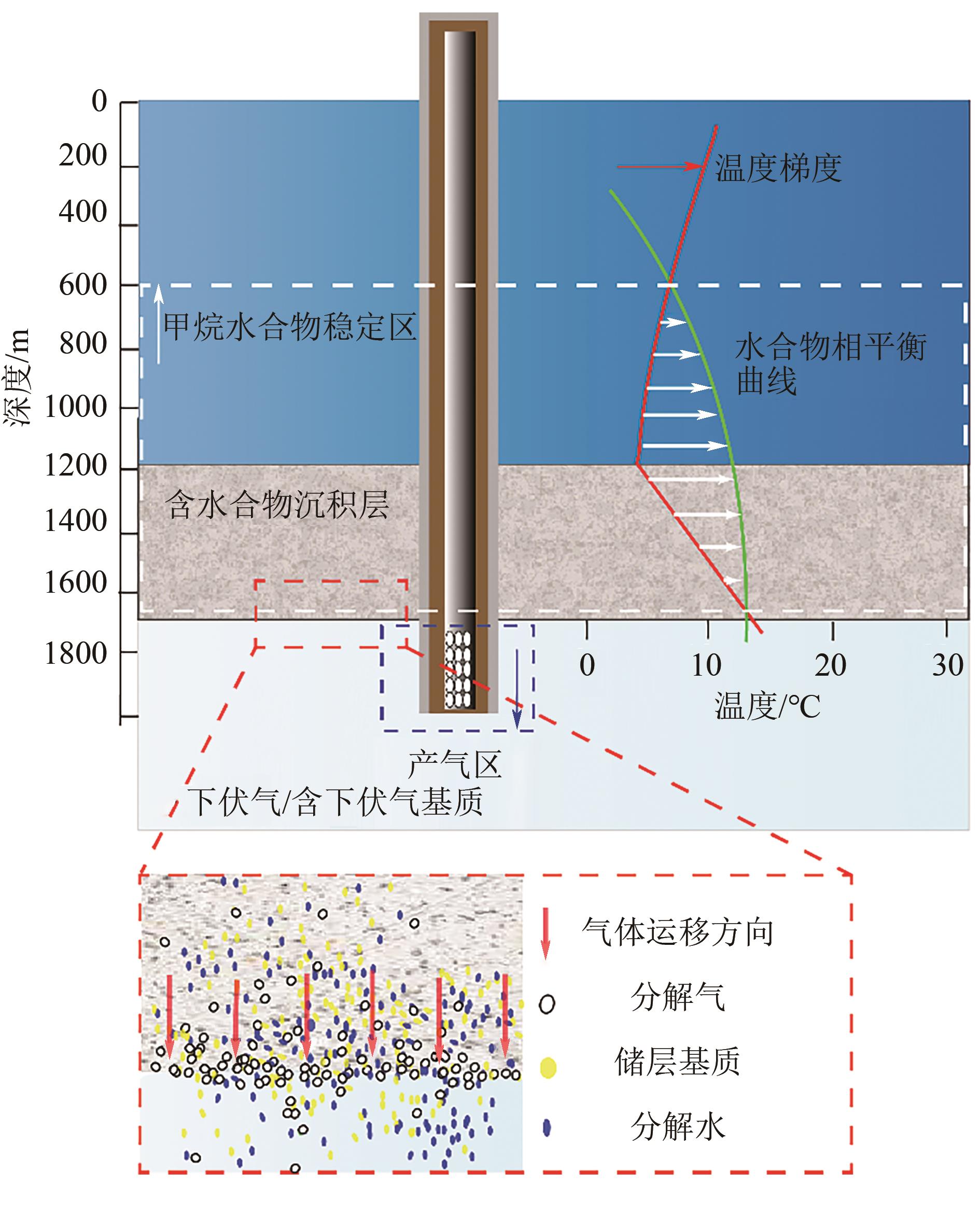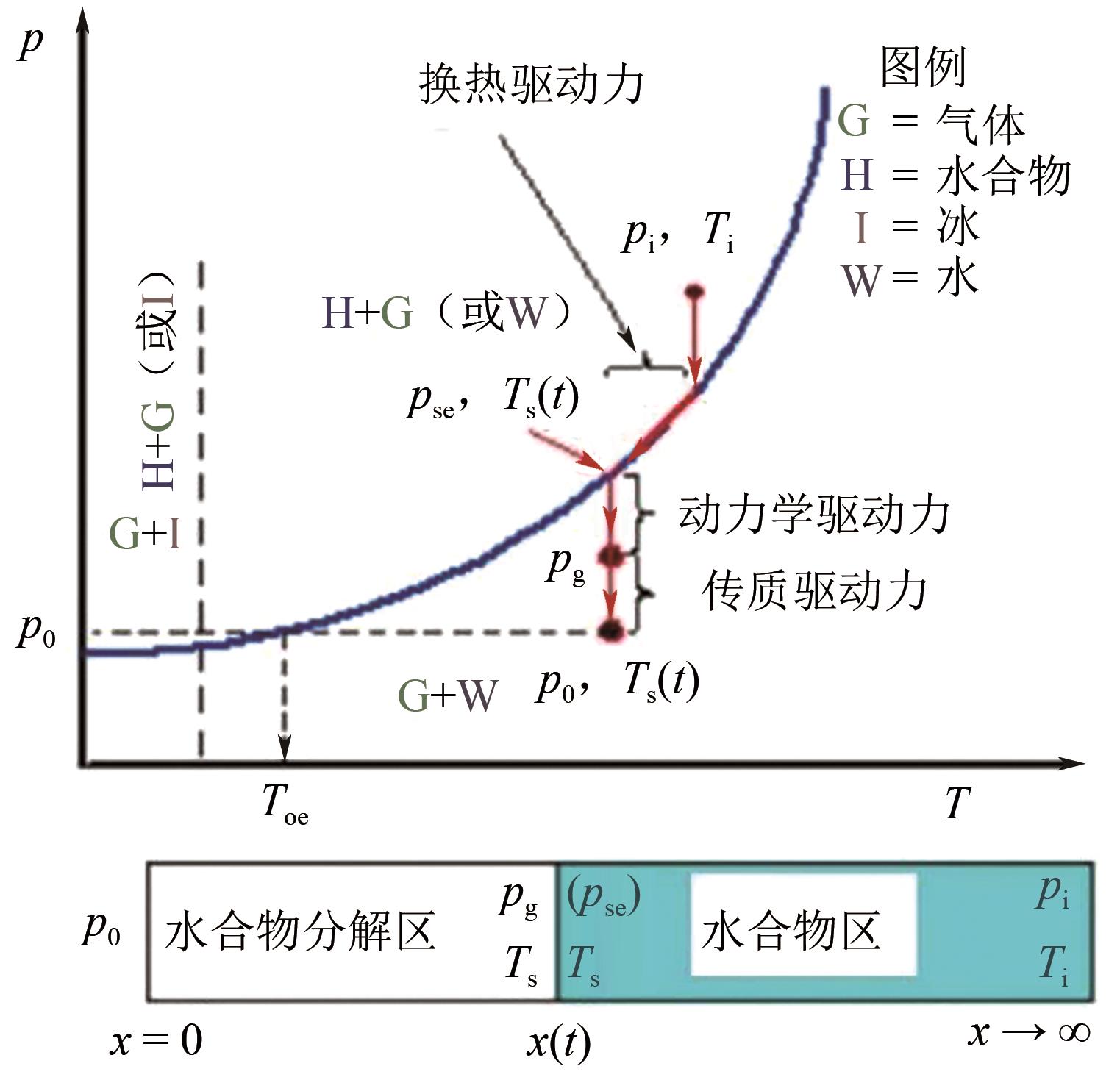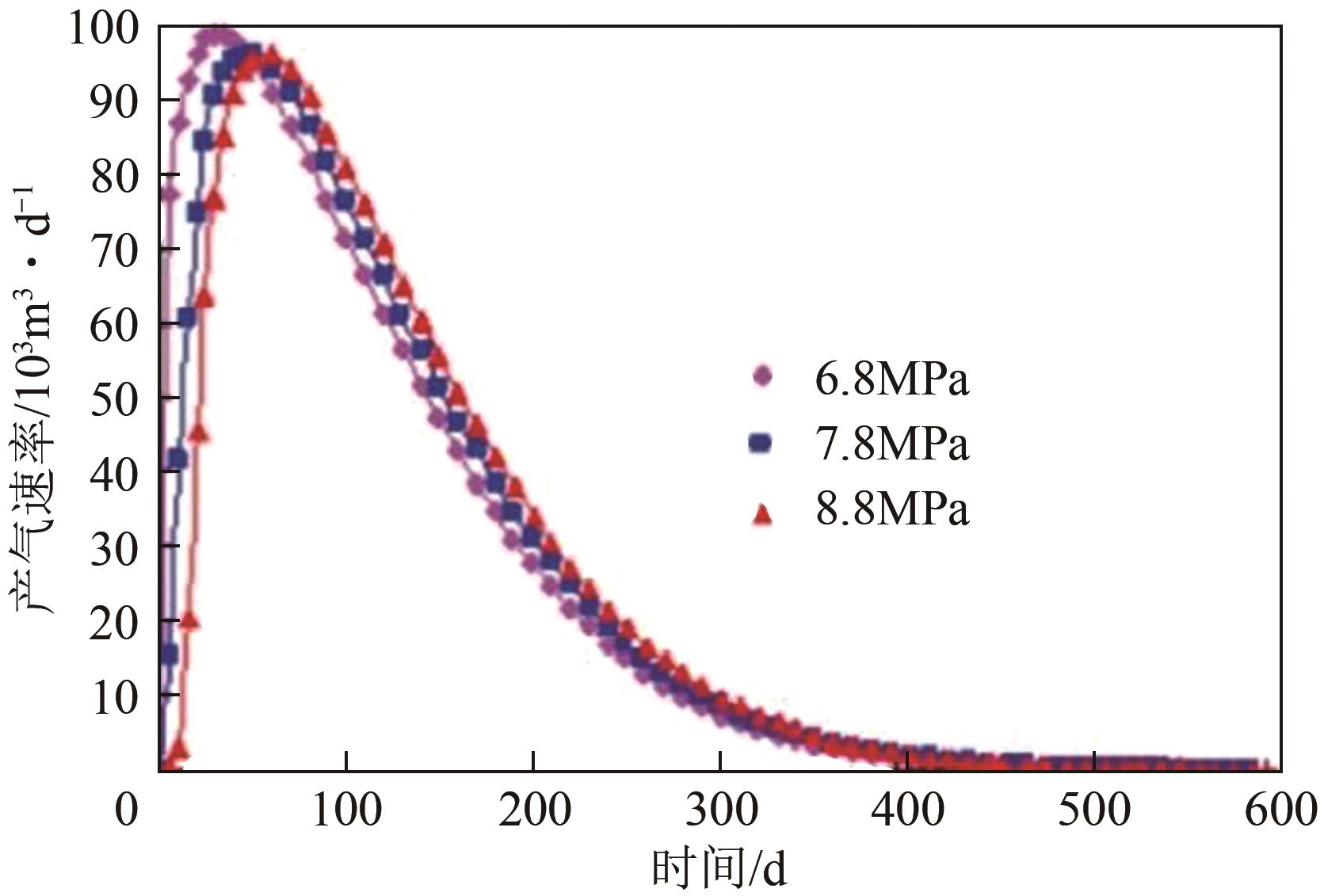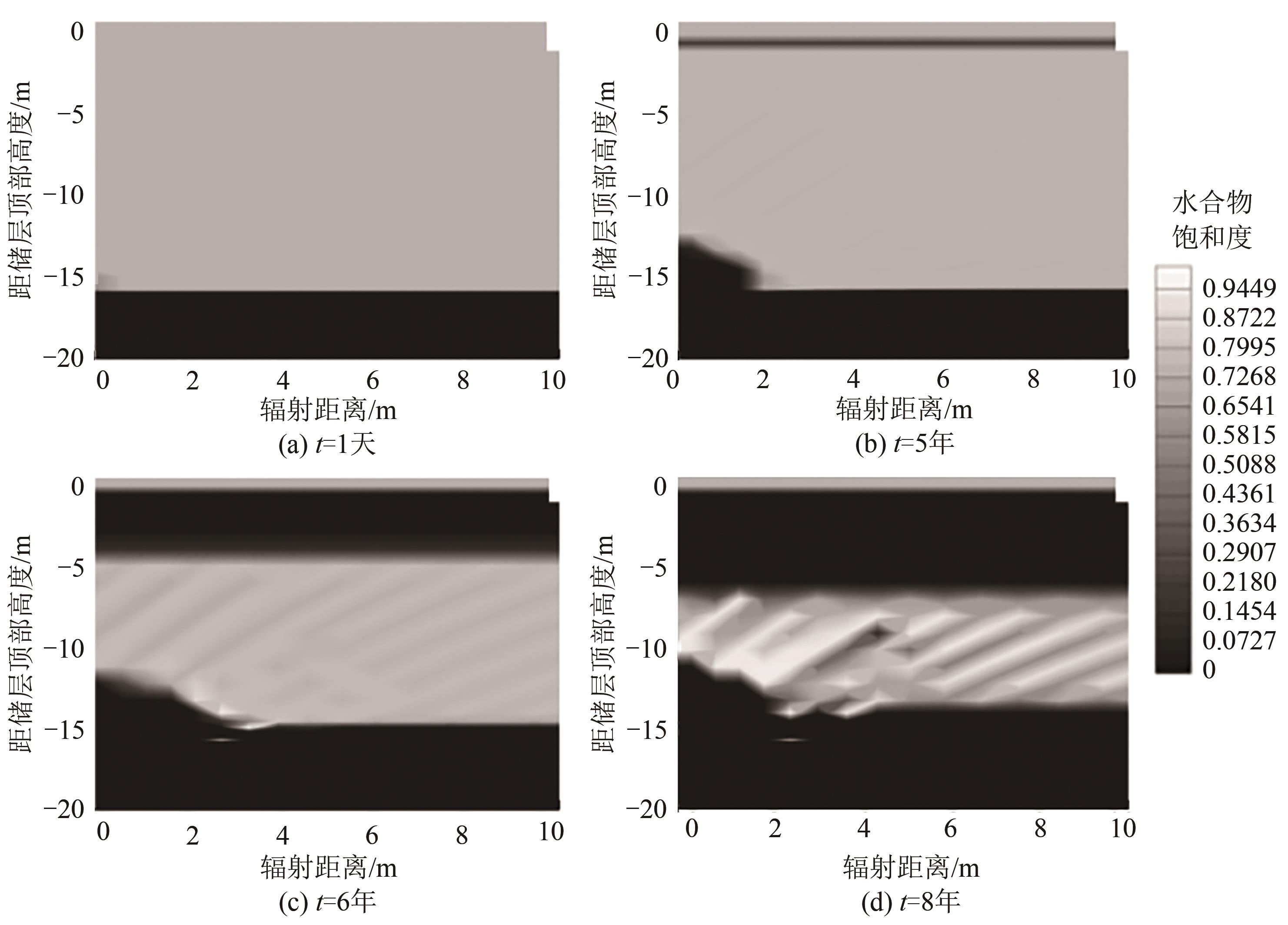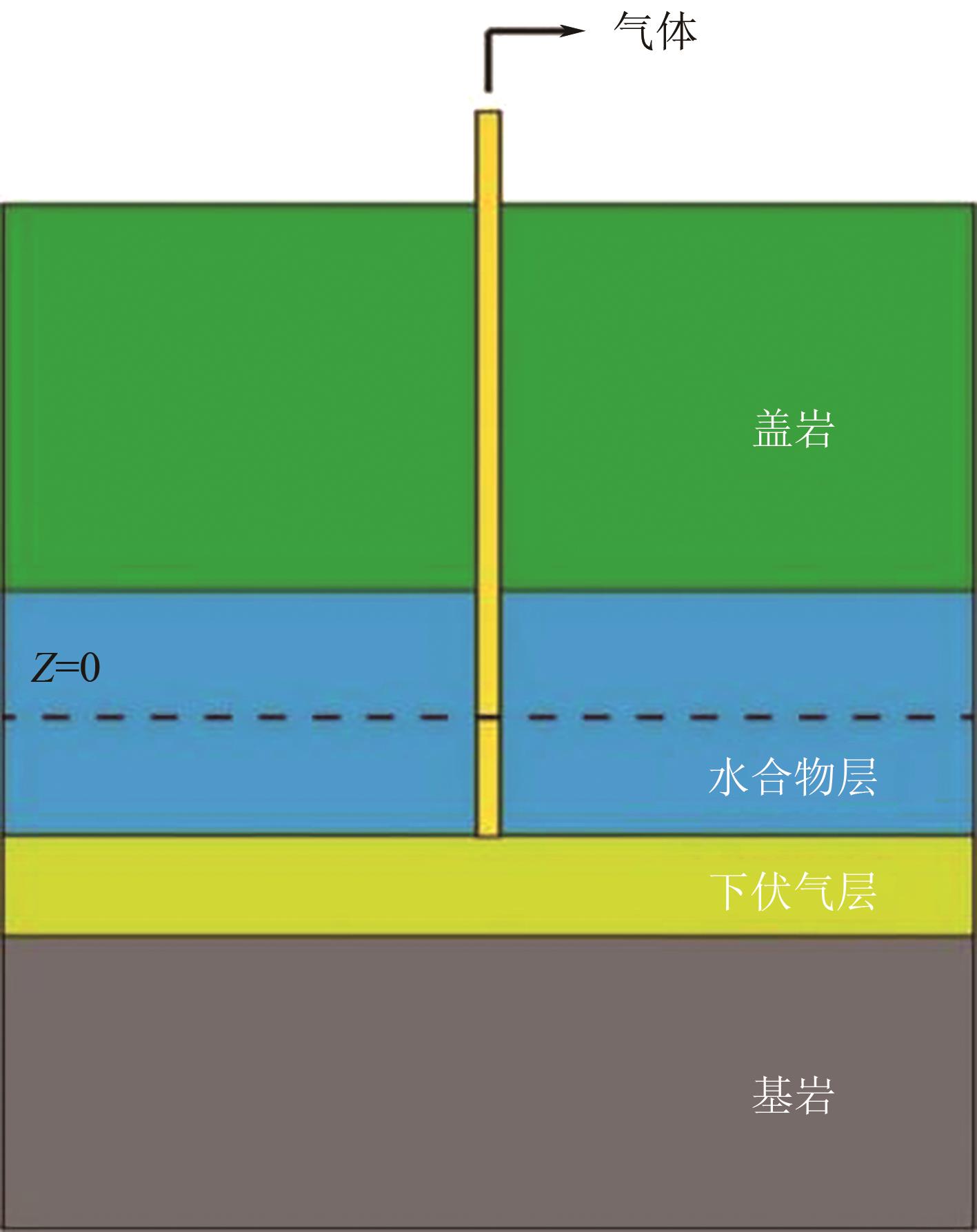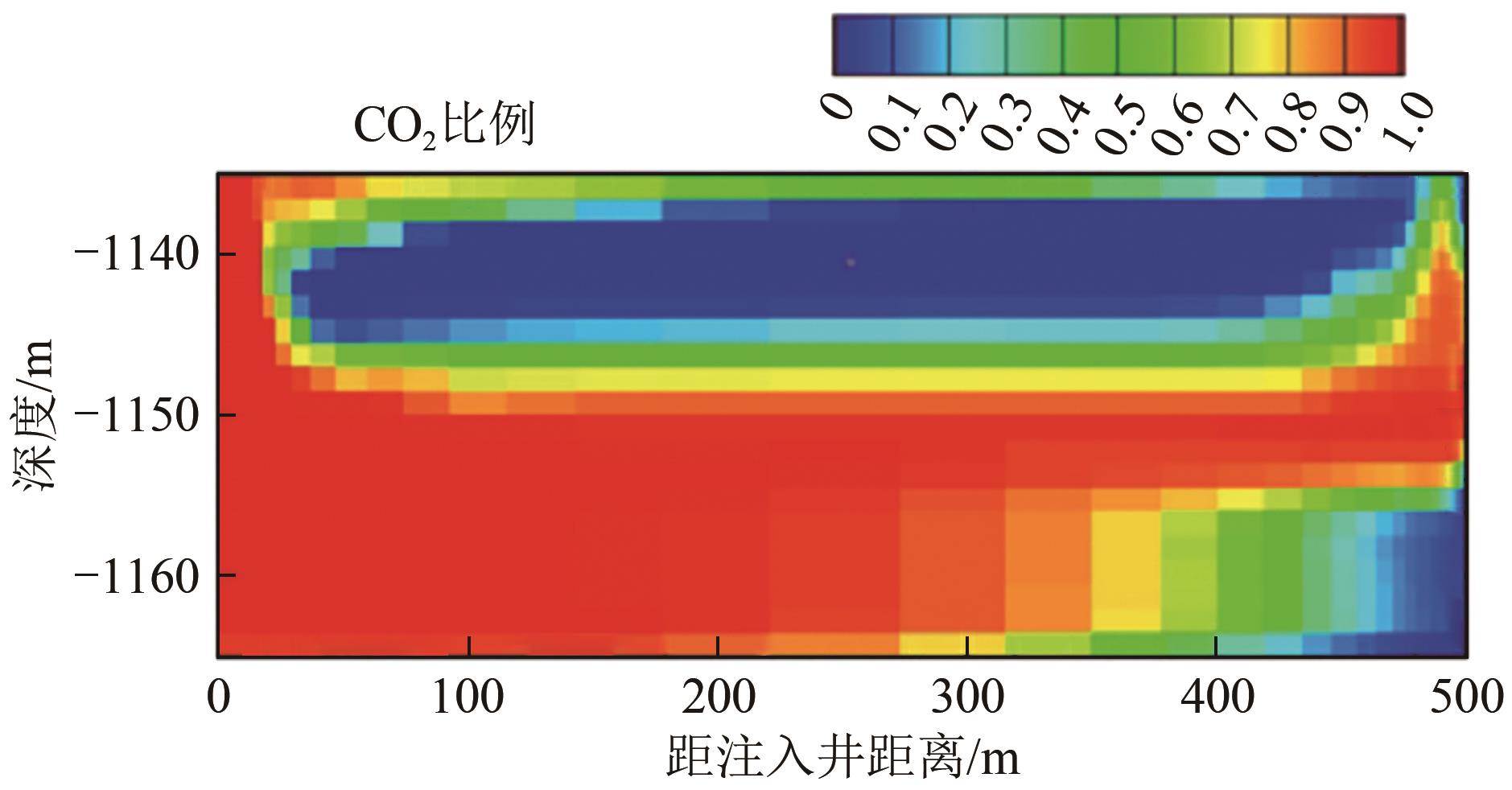Chemical Industry and Engineering Progress ›› 2024, Vol. 43 ›› Issue (4): 2091-2103.DOI: 10.16085/j.issn.1000-6613.2023-0676
• Resources and environmental engineering • Previous Articles
Review of experimental and numerical simulation research on the development of natural gas hydrate reservoir with underlying gas
SUN Xian1( ), LIU Jun2, WANG Xiaohui1(
), LIU Jun2, WANG Xiaohui1( ), SUN Changyu1, CHEN Guangjin1
), SUN Changyu1, CHEN Guangjin1
- 1.College of Chemical Engineering and Environment, China University of Petroleum, Beijing 102249, China
2.Jining Economic and Technological Development Zone, Jining 272000, Shandong, China
-
Received:2023-04-24Revised:2023-09-21Online:2024-05-13Published:2024-04-15 -
Contact:WANG Xiaohui
含下伏气的第一类天然气水合物藏开发实验与模拟研究进展
孙贤1( ), 柳军2, 王晓辉1(
), 柳军2, 王晓辉1( ), 孙长宇1, 陈光进1
), 孙长宇1, 陈光进1
- 1.中国石油大学(北京)化学工程与环境学院,北京 102249
2.济宁经济技术开发区管理委员会,山东 济宁 272000
-
通讯作者:王晓辉 -
作者简介:孙贤(1993—),男,博士研究生,研究方向为新能源化工。E-mail:sunxian2592@126.com。 -
基金资助:国家重点研究开发计划(2021YFC2800902);国家自然科学基金(22178379)
CLC Number:
Cite this article
SUN Xian, LIU Jun, WANG Xiaohui, SUN Changyu, CHEN Guangjin. Review of experimental and numerical simulation research on the development of natural gas hydrate reservoir with underlying gas[J]. Chemical Industry and Engineering Progress, 2024, 43(4): 2091-2103.
孙贤, 柳军, 王晓辉, 孙长宇, 陈光进. 含下伏气的第一类天然气水合物藏开发实验与模拟研究进展[J]. 化工进展, 2024, 43(4): 2091-2103.
share this article
Add to citation manager EndNote|Ris|BibTeX
URL: https://hgjz.cip.com.cn/EN/10.16085/j.issn.1000-6613.2023-0676
| 1 | YIN Zhenyuan, LINGA Praveen. Methane hydrates: A future clean energy resource[J]. Chinese Journal of Chemical Engineering, 2019, 27(9): 2026-2036. |
| 2 | CHONG Zhengrong, YANG She Hern Bryan, BABU Ponnivalavan, et al. Review of natural gas hydrates as an energy resource: Prospects and challenges[J]. Applied Energy, 2016, 162: 1633-1652. |
| 3 | MAKOGON Y F, OMELCHENKO R Y. Commercial gas production from Messoyakha deposit in hydrate conditions[J]. Journal of Natural Gas Science and Engineering, 2013, 11: 1-6. |
| 4 | BUFFETT B A, ZATSEPINA O Y. Formation of gas hydrate from dissolved gas in natural porous media[J]. Marine Geology, 2000, 164(1/2): 69-77. |
| 5 | WANG Xiaohui, CHEN Yun, LI Xingxun, et al. An exergy-based energy efficiency analysis on gas production from gas hydrates reservoir by brine stimulation combined depressurization method[J]. Energy, 2021, 231: 120960. |
| 6 | WANG Xiaohui, XU Xiaojie, CAI Jin, et al. Effect of residual guest concentration in aqueous solution on hydrate reformation kinetics[J]. Fuel, 2023, 339: 126923. |
| 7 | WAITE W F, RUPPEL C D, COLLETT T S, et al. Multi-measurement approach for establishing the base of gas hydrate occurrence in the Krishna-Godavari Basin for sites cored during expedition NGHP-02 in the offshore of India[J]. Marine and Petroleum Geology, 2019, 108: 296-320. |
| 8 | SUN Changyu, CHEN Guangjin. Methane hydrate dissociation above 0℃ and below 0℃[J]. Fluid Phase Equilibria, 2006, 242(2): 123-128. |
| 9 | YANG Xin, SUN Changyu, SU Kehua, et al. A three-dimensional study on the formation and dissociation of methane hydrate in porous sediment by depressurization[J]. Energy Conversion and Management, 2012, 56: 1-7. |
| 10 | FENG Jingchun, WANG Yi, LI Xiaosen, et al. Investigation into optimization condition of thermal stimulation for hydrate dissociation in the sandy reservoir[J]. Applied Energy, 2015, 154: 995-1003. |
| 11 | KIM Eunae, LEE Seungmin, LEE Judong, et al. Influences of large molecular alcohols on gas hydrates and their potential role in gas storage and CO2 sequestration[J]. Chemical Engineering Journal, 2015, 267: 117-123. |
| 12 | LI Xiaosen, YANG Bo, ZHANG Yu, et al. Experimental investigation into gas production from methane hydrate in sediment by depressurization in a novel pilot-scale hydrate simulator[J]. Applied Energy, 2012, 93: 722-732. |
| 13 | CAO Bojian, SUN Yifei, CHEN Hongnan, et al. An approach to the high efficient exploitation of nature gas hydrate and carbon sequestration via injecting CO2/H2 gas mixture with varying composition[J]. Chemical Engineering Journal, 2023, 455: 140634. |
| 14 | CHOI Wonjung, Junghoon MOK, LEE Jonghyuk, et al. Effective CH4 production and novel CO2 storage through depressurization-assisted replacement in natural gas hydrate-bearing sediment[J]. Applied Energy, 2022, 326: 119971. |
| 15 | FAN Shuanshi, YU Wangyang, YU Chi, et al. Investigation of enhanced exploitation of natural gas hydrate and CO2 sequestration combined gradual heat stimulation with CO2 replacement in sediments[J]. Journal of Natural Gas Science and Engineering, 2022, 104: 104686. |
| 16 | Junchen LYU, CHENG Zucheng, DUAN Jiateng, et al. Enhanced CH4 recovery from hydrate-bearing sand packs via CO2 replacement assisted thermal stimulation method[J]. Journal of Natural Gas Science and Engineering, 2021, 96: 104326. |
| 17 | WANG Tian, SUN Lingjie, FAN Ziyu, et al. Promoting CH4/CO2 replacement from hydrate with warm brine injection for synergistic energy harvest and carbon sequestration[J]. Chemical Engineering Journal, 2023, 457: 141129. |
| 18 | HANCOCK S, COLLETT T, DALLIMORE S, et al. Overview of thermal stimulation production-test results for the JAPEX/JNOC/GSCet al. Mallik 5L-38 gas hydrate production research well [C]//Scientific results from the Mallik 2002 gas hydrate production research well program, Mackenzie delta, Northwest Territories, Canada. Geological Survey of Canada, 2005. |
| 19 | KURIHARA Masanori, SATO Akihiko, FUNATSU Kunihiro, et al. Analysis of production data for 2007/2008 Mallik gas hydrate production tests in Canada[C]//International Oil and Gas Conference and Exhibition in China. Beijing: Society of Petroleum Engineers, June 8-10, 2010. |
| 20 | FUJII Tetsuya, SUZUKI Kiyofumi, TAKAYAMA Tokujiro, et al. Geological setting and characterization of a methane hydrate reservoir distributed at the first offshore production test site on the Daini-Atsumi Knoll in the eastern Nankai Trough, Japan[J]. Marine and Petroleum Geology, 2015, 66: 310-322. |
| 21 | LI Rui, CAO Bojian, CHEN Hongnan, et al. Experimental study on the dual-gas co-production from hydrate deposit and its underlying gas reservoir[J]. Energy, 2022, 258: 124847. |
| 22 | ZHANG Jidong, YIN Zhenyuan, LI Qingping, et al. Comparison of fluid production between excess-gas and excess-water hydrate-bearing sediments under depressurization and its implication on energy recovery[J]. Energy, 2023, 282: 128315. |
| 23 | LI Xingxun, LIU Ming, LI Qingping, et al. Visual study on methane hydrate formation and depressurization-induced methane hydrate dissociation processes in a micro-packed bed reactor[J]. Fuel, 2023, 332: 125980. |
| 24 | 王云飞, 孙长宇, 喻西崇, 等. 三维中试装置内水合物降压分解动力学规律[J]. 化工进展, 2022, 41(8): 4111-4119 |
| WANG Yunfei, SUN Changyu, YU Xichong, et al. Analysis of the methane hydrate decomposition kinetics through depressurization method by using a pilot-scale reactor[J]. Chemical Industry and Engineering Progress, 2022, 41(8): 4111-4119. | |
| 25 | 李桂琴, 李刚, 陈朝阳, 等. 多孔介质中甲烷水合物不同分解方法实验研究[J]. 化工进展, 2013, 32(6): 1230-1235. |
| LI Guiqin, LI Gang, CHEN Zhaoyang, et al. Experimental investigation on different methods of dissociation of methane hydrate in porous sediment[J]. Chemical Industry and Engineering Progress, 2013, 32(6): 1230-1235. | |
| 26 | 黄婷, 李清平, 李锐, 等. 第一类水合物藏降压开采实验模拟[J]. 化工进展, 2022, 41(8): 4120-4128. |
| HUANG Ting, LI Qingping, LI Rui, et al. Experimental simulation of depressurization mining of the class 1 hydrate reservoir[J]. Chemical Industry and Engineering Progress, 2022, 41(8): 4120-4128. | |
| 27 | DONG Shuang, YANG Mingjun, ZHANG Lei, et al. Methane hydrate exploitation characteristics and thermodynamic non-equilibrium mechanisms by long depressurization method[J]. Energy, 2023, 280: 128178. |
| 28 | WANG Xiaochu, SUN Youhong, PENG Saiyu, et al. Effect of pore water on the depressurization of gas hydrate in clayey silt sediments[J]. Journal of Natural Gas Science and Engineering, 2022, 108: 104836. |
| 29 | CHENG Fanbao, WU Zhaoran, SUN Xiang, et al. Compression-induced dynamic change in effective permeability of hydrate-bearing sediments during hydrate dissociation by depressurization[J]. Energy, 2023, 264: 126137. |
| 30 | GE Kun, ZHANG Xinyu, WANG Jiaqi, et al. Optimization of the depressurization rate and stepwise strategy for hydrate exploitation using a genetic algorithm-based depressurization method[J]. Chemical Engineering Science, 2023, 265: 118218. |
| 31 | ZHAO Jie, ZHENG Jianan, WANG Xinru, et al. Effects of underlying gas on formation and gas production of methane hydrate in muddy low-permeability cores[J]. Fuel, 2022, 309: 122128. |
| 32 | KRET Kakda, TSUJI Takeshi, CHHUN Chanmaly, et al. Distributions of gas hydrate and free gas accumulations associated with upward fluid flow in the Sanriku-Oki forearc basin, northeast Japan[J]. Marine and Petroleum Geology, 2020, 116: 104305. |
| 33 | David R COX, HUUSE Mads, NEWTON Andrew M W, et al. Shallow gas and gas hydrate occurrences on the northwest Greenland shelf margin[J]. Marine Geology, 2021, 432: 106382. |
| 34 | ZHANG Zijian, MCCONNELL Daniel R, HAN Dehua. Rock physics-based seismic trace analysis of unconsolidated sediments containing gas hydrate and free gas in Green Canyon 955, Northern Gulf of Mexico[J]. Marine and Petroleum Geology, 2012, 34(1): 119-133. |
| 35 | MISHRA C K, DEWANGAN P, MUKHOPADHYAY R, et al. Velocity modeling and attribute analysis to understand the gas hydrates and free gas system in the Mannar Basin, India[J]. Journal of Natural Gas Science and Engineering, 2021, 92: 104007. |
| 36 | ZHAO Jie, ZHENG Jianan, DONG Shuang, et al. Gas production enhancement effect of underlying gas on methane hydrates in marine sediments by depressurization[J]. Fuel, 2022, 310: 122415. |
| 37 | Moridis GEORGE J, Collett TIMOTY S. Strategies for gas production from hydrate accumulations under various geologic conditions[C]//Proceeding Tough Symposium, Lawrence Berkeley National Laboratory, Berkeley, California, 2003. |
| 38 | LI Fengguang, YUAN Qing, LI Tianduo, et al. A review: Enhanced recovery of natural gas hydrate reservoirs[J]. Chinese Journal of Chemical Engineering, 2019, 27(9): 2062-2073. |
| 39 | COLLETT T, GINSBURG G. Gas hydrates in the messoyakha gas field of the West Siberian Basin — A re-examination of the geologic evidence[J]. International Journal of Offshore and Polar Engineering, 1998, 8(1): 96-103. |
| 40 | LI Nan, ZHANG Jie, XIA Mingji, et al. Gas production from heterogeneous hydrate-bearing sediments by depressurization in a large-scale simulator[J]. Energy, 2021, 234: 121183. |
| 41 | WANG Yunfei, WANG Lingban, LI Yang, et al. Effect of temperature on gas production from hydrate-bearing sediments by using a large 196-L reactor[J]. Fuel, 2020, 275: 117963. |
| 42 | ZHAO Jie, ZHENG Jianan, KANG Taoquan, et al. Dynamic permeability and gas production characteristics of methane hydrate-bearing marine muddy cores: Experimental and modeling study[J]. Fuel, 2021, 306: 121630. |
| 43 | YANG Mingjun, GAO Yi, ZHOU Hang, et al. Gas production from different classes of methane hydrate deposits by the depressurization method[J]. International Journal of Energy Research, 2019, 43(10): 5493-5505. |
| 44 | SUN Xian, XIAO Peng, WANG Xiaohui, et al. Study on the influence of well closure and production pressure during dual-gas co-production from hydrate-bearing sediment containing underlying gas[J]. Energy, 2023, 279: 128067. |
| 45 | SUN Xian, WANG Xiaohui, XIAO Peng, et al. Dual-gas co-production behavior for hydrate-bearing coarse sediment with underlying gas via depressurization under constrained conditions[J]. Gas Science and Engineering, 2023, 116: 205038. |
| 46 | ZHAO Jiafei, LIU Yulong, GUO Xianwei, et al. Gas production behavior from hydrate-bearing fine natural sediments through optimized step-wise depressurization[J]. Applied Energy, 2020, 260: 114275. |
| 47 | ZHENG Jianan, ZHAO Jie, TENG Ying, et al. Joint-production characteristics of typical marine composite reservoir with water-saturated methane hydrates and higher-pressure gas by depressurization[J]. Gas Science and Engineering, 2023, 110: 204912. |
| 48 | CHEN Guangjin, GUO Tianmin. A new approach to gas hydrate modelling[J]. Chemical Engineering Journal, 1998, 71(2): 145-151. |
| 49 | HONG H, POOLADI-DARVISH M, BISHNOI P R. Analytical modelling of gas production from hydrates in porous media [J]. Journal of Canadian Petroleum Technology, 2003, 42(11): 45-56. |
| 50 | GERAMI S, POOLADI-DARVISH M. Predicting gas generation by depressurization of gas hydrates where the sharp-interface assumption is not valid[J]. Journal of Petroleum Science & Engineering, 2007, 56(1/2/3): 146-164. |
| 51 | HOLDER G, ANGERT P. Simulation of gas production from a reservoir containing both gas hydrates and free natural gas[C]// SPE Annual Technical Conference and Exhibition. New Orleans: Society of Petroleum Engineers, 1982. |
| 52 | JIANG Xingxing, LI Shuxia, ZHANG Lina. Sensitivity analysis of gas production from Class Ⅰ hydrate reservoir by depressurization[J]. Energy, 2012, 39(1): 281-285. |
| 53 | Doruk ALP, PARLAKTUNA Mahmut, MORIDIS George J. Gas production by depressurization from hypothetical Class 1G and Class 1W hydrate reservoirs[J]. Energy Conversion and Management, 2007, 48(6): 1864-1879. |
| 54 | SUN Xiang, LUO Tingting, WANG Lei, et al. Numerical simulation of gas recovery from a low-permeability hydrate reservoir by depressurization[J]. Applied Energy, 2019, 250: 7-18. |
| 55 | GOEL Naval, WIGGINS Michael, SHAH Subhash. Analytical modeling of gas recovery from in situ hydrates dissociation[J]. Journal of Petroleum Science and Engineering, 2001, 29(2): 115-127. |
| 56 | JI Chuang, AHMADI Goodarz, SMITH Duane H. Natural gas production from hydrate decomposition by depressurization[J]. Chemical Engineering Science, 2001, 56(20): 5801-5814. |
| 57 | HONG H, POOLADI-DARVISH M. Simulation of depressurization for gas production from gas hydrate reservoirs[J]. Journal of Canadian Petroleum Geology, 2005, 44: 39-46. |
| 58 | Hamed TABATABAIE S, Mehran POOLADI-DARVISH. Analytical solution for gas production from hydrate reservoirs underlain with free gas[J]. Journal of Natural Gas Science and Engineering, 2009, 1(1/2): 46-57. |
| 59 | WHITE M D, WURSTNER S K, MCGRAIL B P. Numerical studies of methane production from Class 1 gas hydrate accumulations enhanced with carbon dioxide injection[J]. Marine and Petroleum Geology, 2011, 28(2): 546-560. |
| [1] | DU Yongliang, LIANG Zhuobin, GONG Yaoxu, BI Haojie, XU Zhiyuan, YUAN Hongying. Air gap membrane distillation research status and applications [J]. Chemical Industry and Engineering Progress, 2024, 43(4): 1655-1666. |
| [2] | ZHANG Qiaoling, MA Zuhao, YU Ziyuan, LIU Zijun, HUANG Biyun, YANG Zhendong, MA Haoran. Convection heat transfer research of supercritical R134a in mini-channel of tube [J]. Chemical Industry and Engineering Progress, 2024, 43(4): 1667-1675. |
| [3] | SUN Chao, AI Shiqin, LIU Yuechan. Numerical simulation plate side flow heat transfer new plate-shell heat exchanger with considering physical property changes and shell heat transfer [J]. Chemical Industry and Engineering Progress, 2024, 43(4): 1676-1689. |
| [4] | WANG Yanhong, JIANG Lei, XUE Shuai, LI Hongwei, JIA Yuting. Analysis on heat transfer characteristics of supercritical methane in precooling channels [J]. Chemical Industry and Engineering Progress, 2024, 43(4): 1690-1699. |
| [5] | ZHU Yanni, WANG Wei, SUN Yanchenhao, WEI Gang, ZHANG Dawei. Numerical simulation of centrifugal spray drying based on single-droplet evaporation [J]. Chemical Industry and Engineering Progress, 2024, 43(4): 1700-1710. |
| [6] | ZHAO Jilong, GUO Yuxiang, CHEN Hongxia, YUAN Dazhong, DU Xiaoze. Experimental and numerical simulation on heat transfer characteristics of vertical cesium heat pipes [J]. Chemical Industry and Engineering Progress, 2024, 43(4): 1711-1719. |
| [7] | QIAN Zhiguang, WANG Shixue, ZHU Yu, YUE Like. Start-up characteristics of high-temperature proton exchange membrane fuel cell stacks based on flat heat pipes [J]. Chemical Industry and Engineering Progress, 2024, 43(4): 1754-1763. |
| [8] | YANG Dongxiao, XIONG Qizhao, WANG Yi, CHEN Yang, LI Libo, LI Jinping. Progress in the preparation of hierarchically porous MOF and applications in adsorption and separation [J]. Chemical Industry and Engineering Progress, 2024, 43(4): 1882-1896. |
| [9] | DING Lihua, XU Hongtao, ZHANG Chenyu. Analysis of the heat storage performance of the latent heat storage unit combined with frustum wavy tube [J]. Chemical Industry and Engineering Progress, 2024, 43(3): 1214-1223. |
| [10] | WANG Kai, YE Dingding, ZHU Xun, YANG Yang, CHEN Rong, LIAO Qiang. Performance of electrochemical reduction of CO2 by superaerophilic copper foam electrode with nanowires [J]. Chemical Industry and Engineering Progress, 2024, 43(3): 1232-1240. |
| [11] | XU Zewen, WANG Ming, WANG Qiang, HOU Yingfei. Recent advances in amine-rich membrane for CO2 separation [J]. Chemical Industry and Engineering Progress, 2024, 43(3): 1374-1386. |
| [12] | YU Yanfang, DING Pengcheng, MENG Huibo, SHI Bowen, YAO Yunjuan. Heat transfer enhancement of non-Newtonian fluid in the blade-type static mixer [J]. Chemical Industry and Engineering Progress, 2024, 43(3): 1145-1156. |
| [13] | YIN Shaowu, LI Xianxian, HAN Jiawei, LU Ming, TONG Lige, WANG Li. Heat charge and release characteristics of household off-peak electricity thermal storage heating system [J]. Chemical Industry and Engineering Progress, 2024, 43(3): 1206-1213. |
| [14] | YAO Fuchun, BI Yingying, TANG Chen, DU Minghui, LI Zeying, ZHANG Yaozong, SUN Xiaoming. Analysis of the mass transfer mechanism in a hollow fiber membrane ozone contact reactor [J]. Chemical Industry and Engineering Progress, 2024, 43(2): 1089-1097. |
| [15] | LI Jing, FANG Qing, ZHOU Wenhao, WU Guoliang, WANG Jiahui, ZHANG Hua, NI Hongwei. Effect of baffle configuration on the multiphase flow behaviors of vanadium shale leaching tank [J]. Chemical Industry and Engineering Progress, 2024, 43(2): 619-627. |
| Viewed | ||||||
|
Full text |
|
|||||
|
Abstract |
|
|||||
